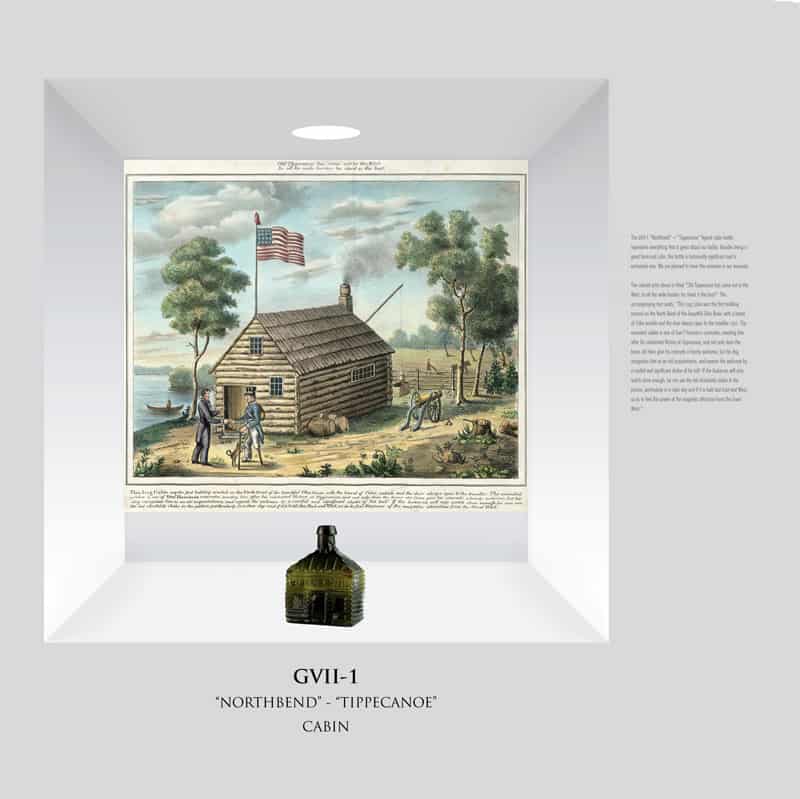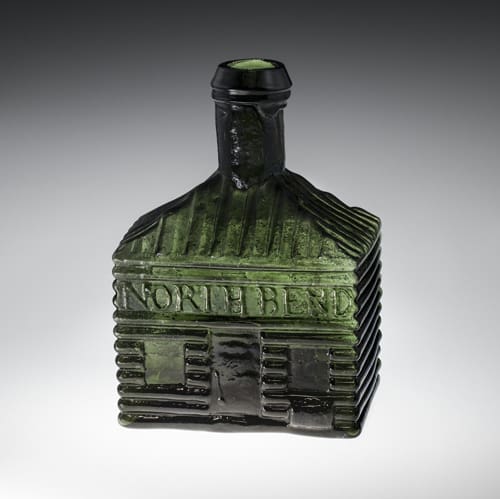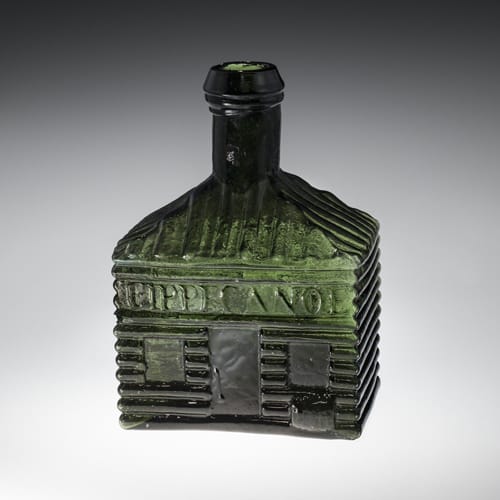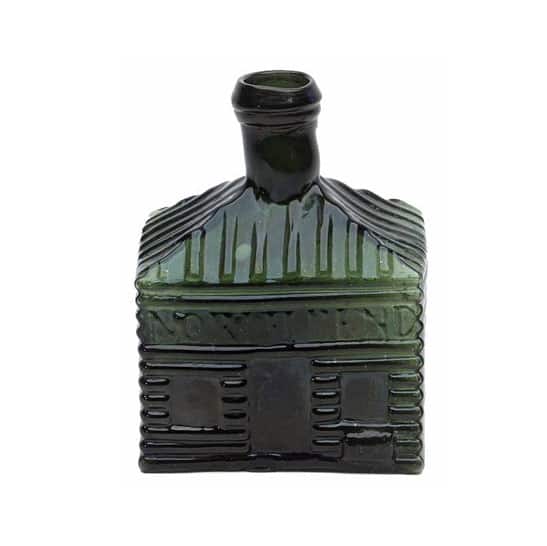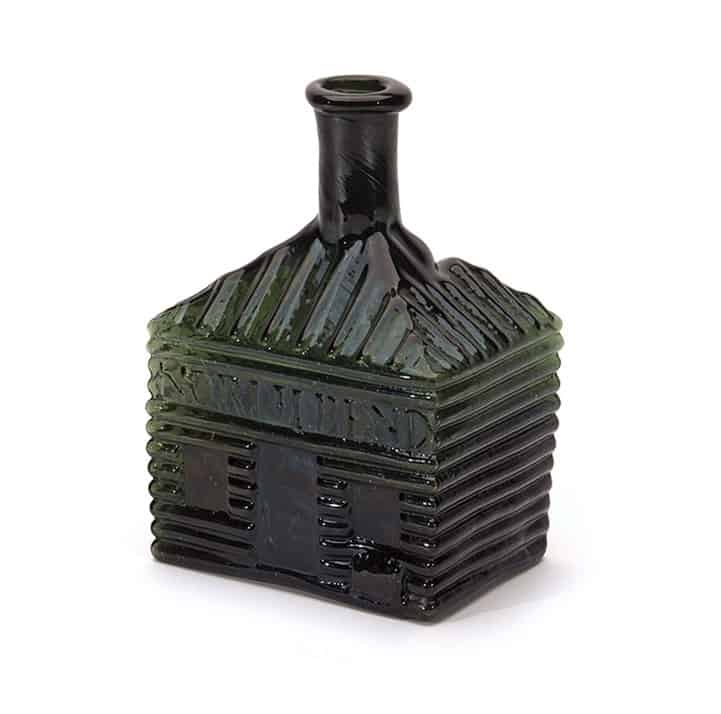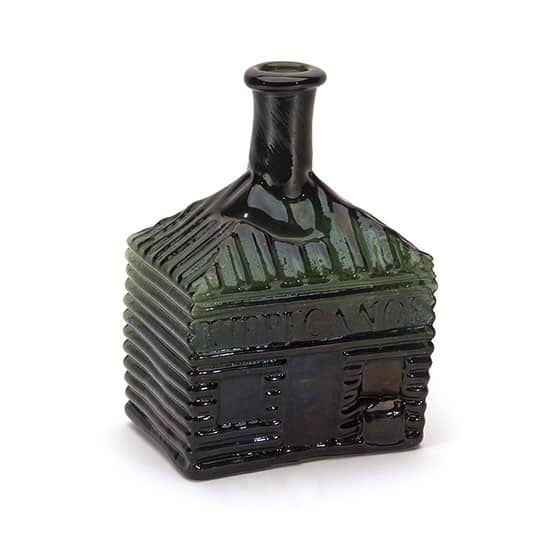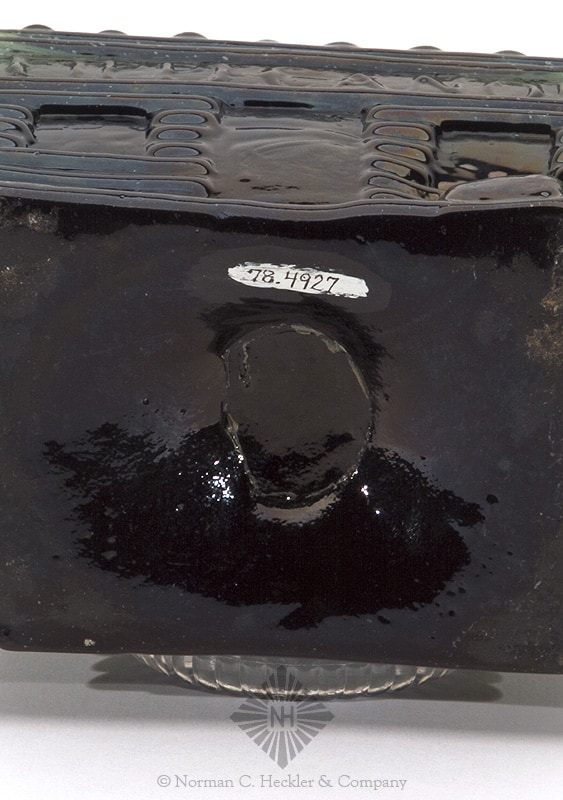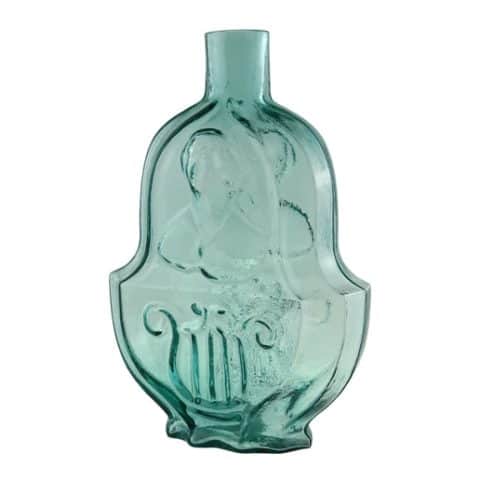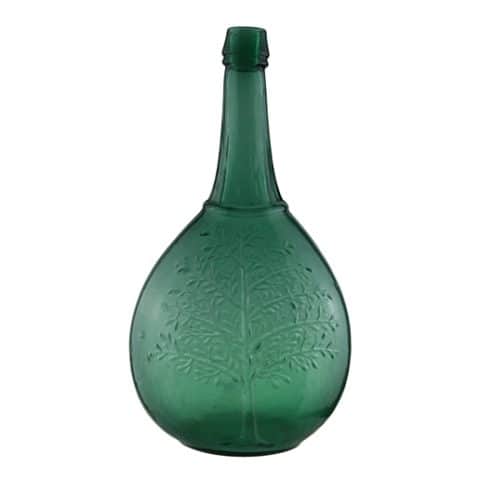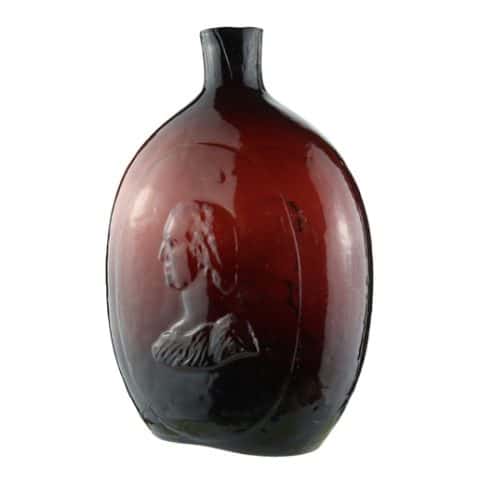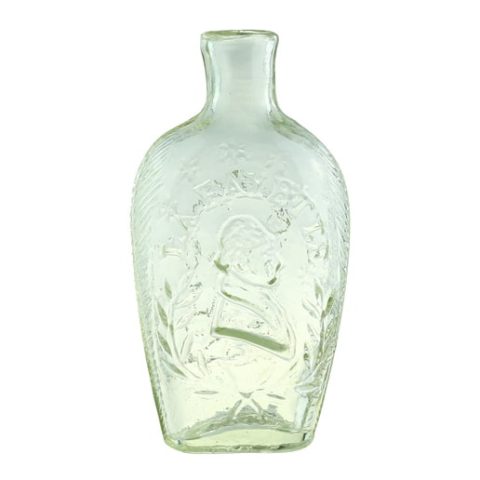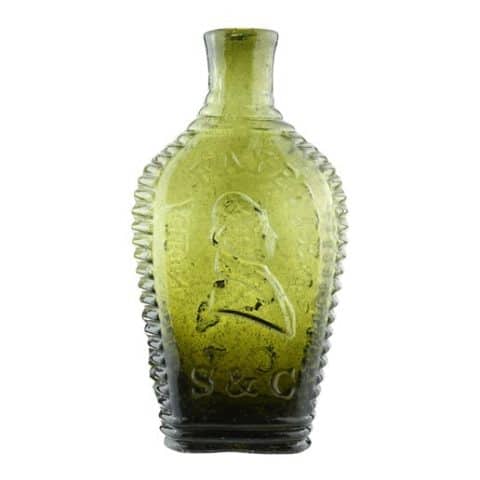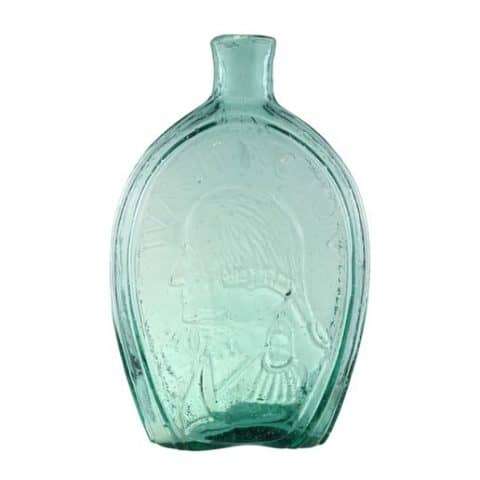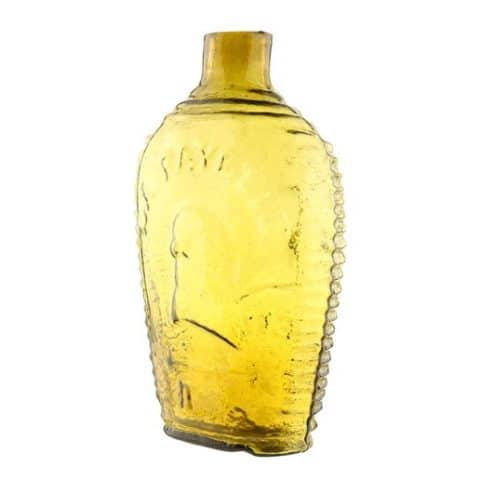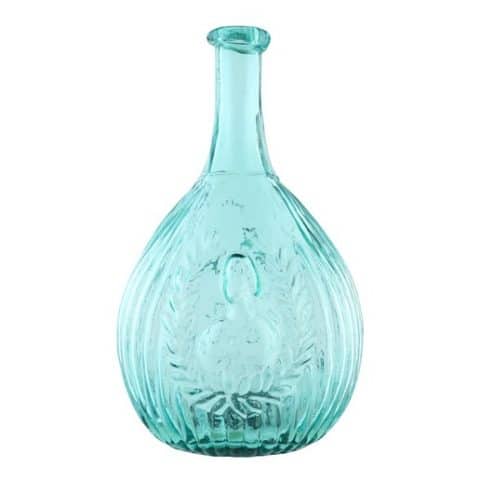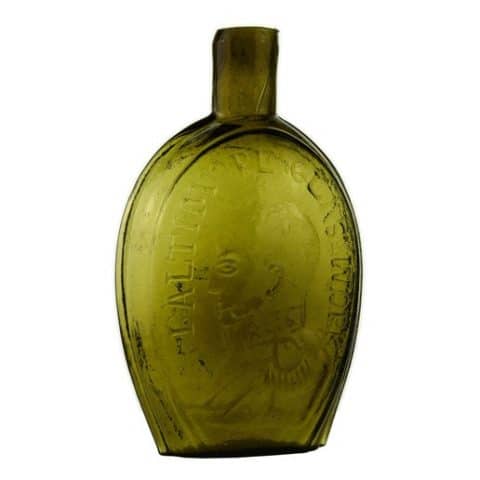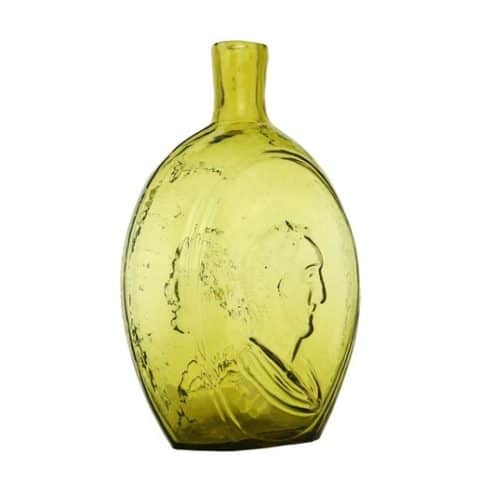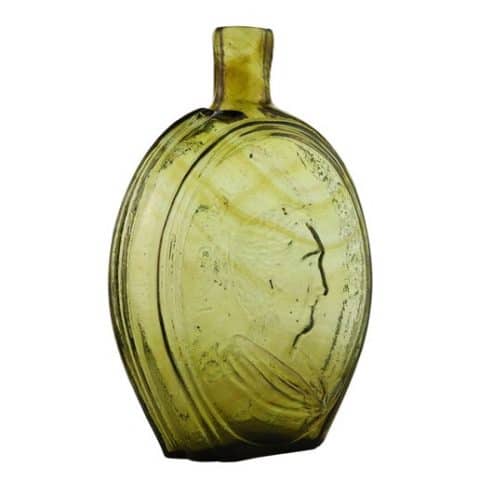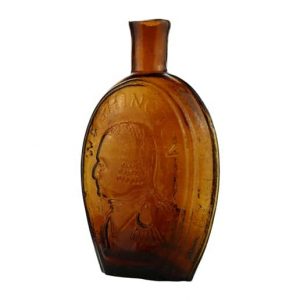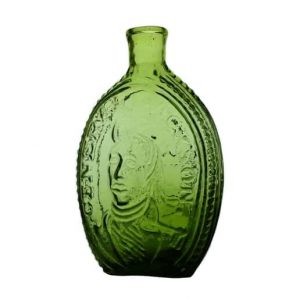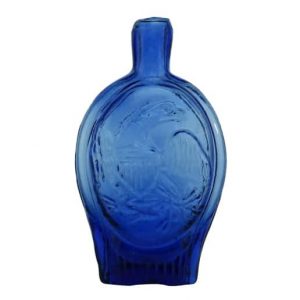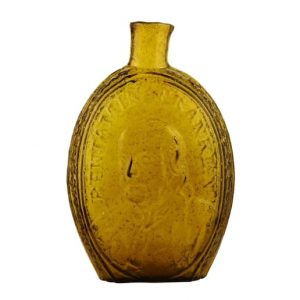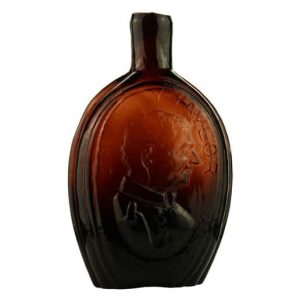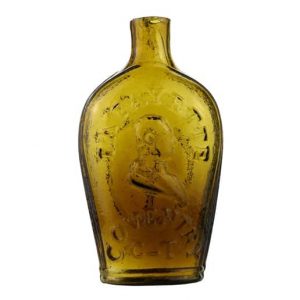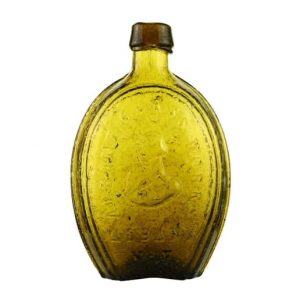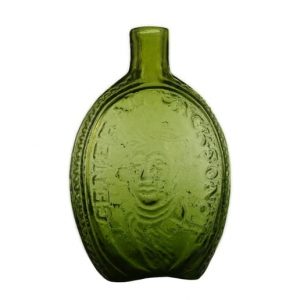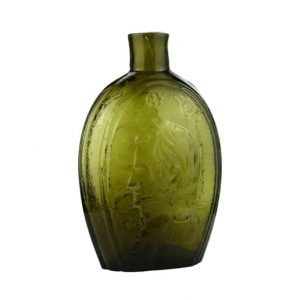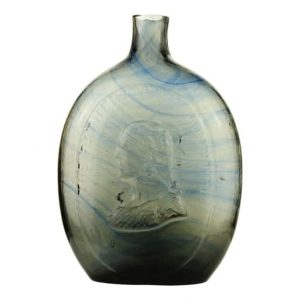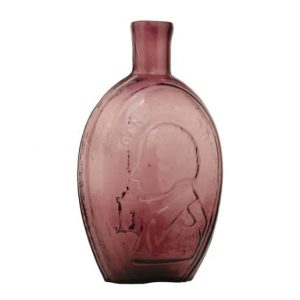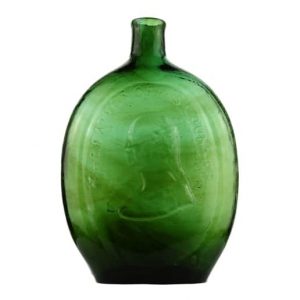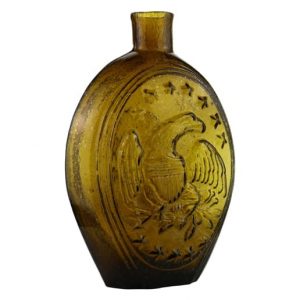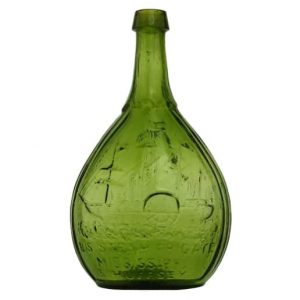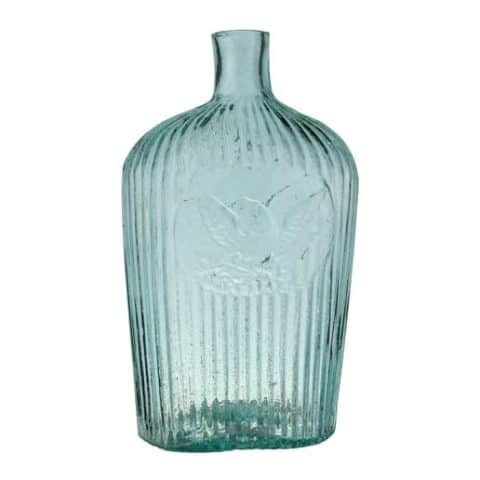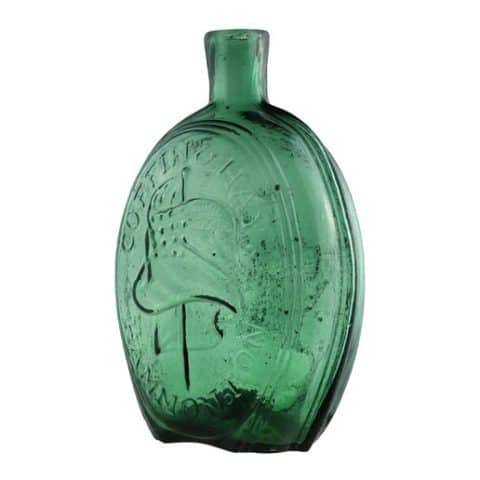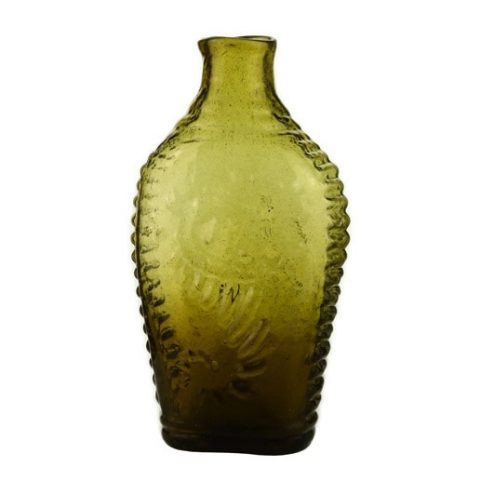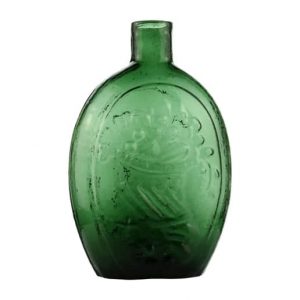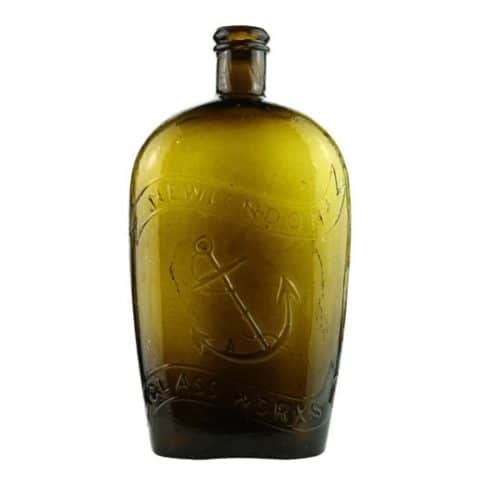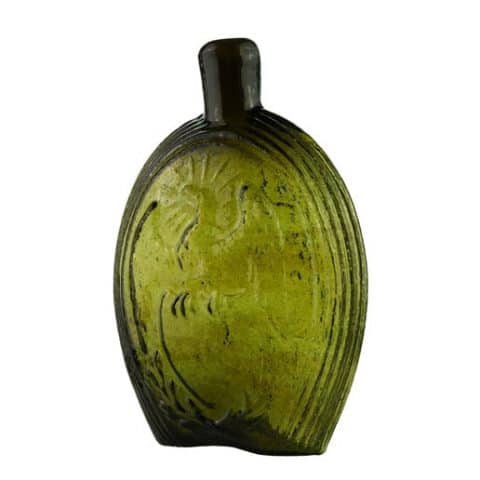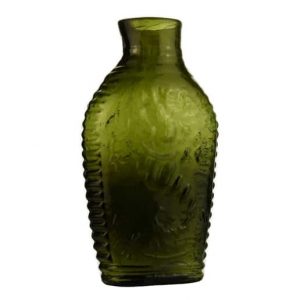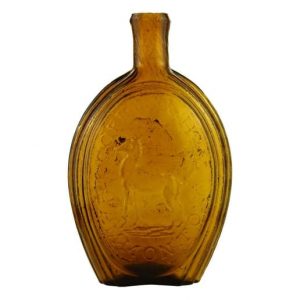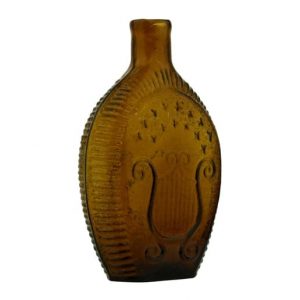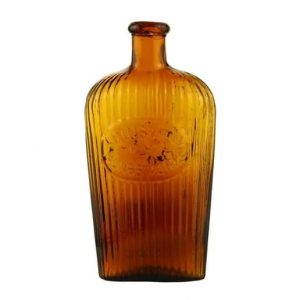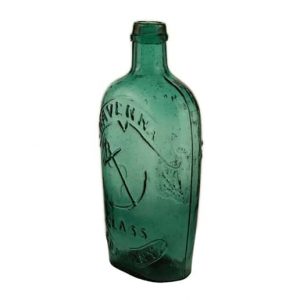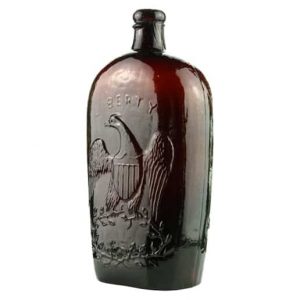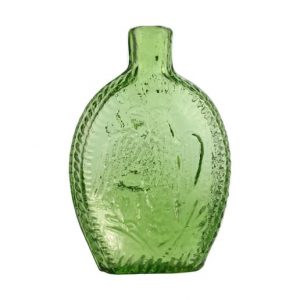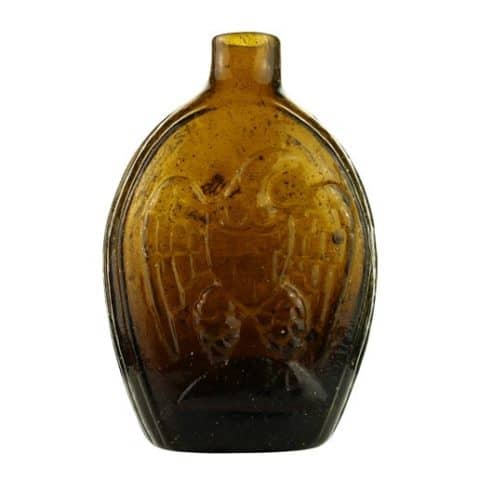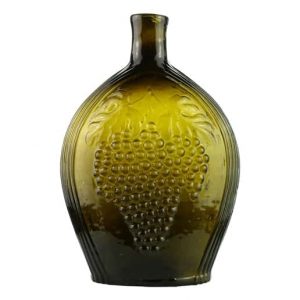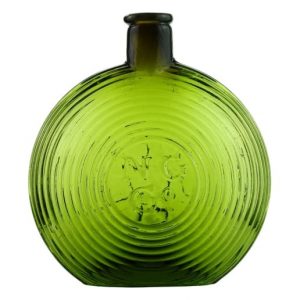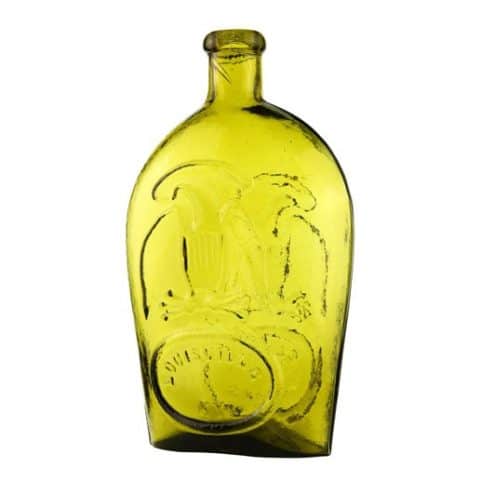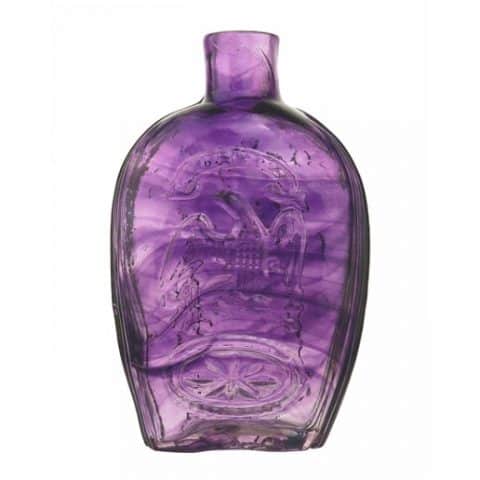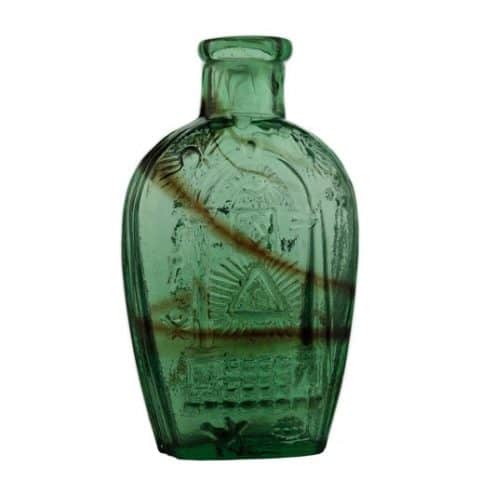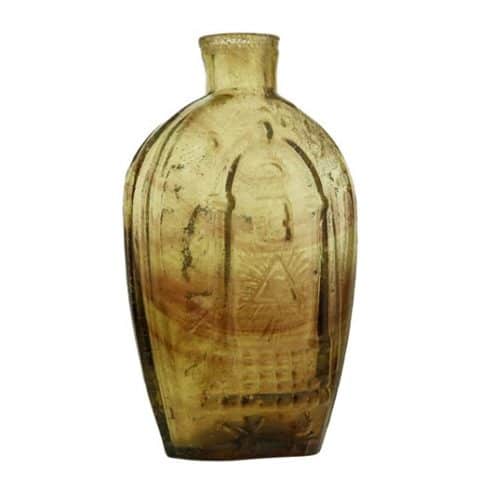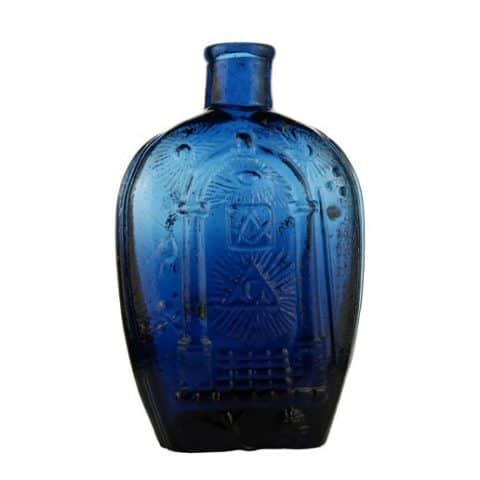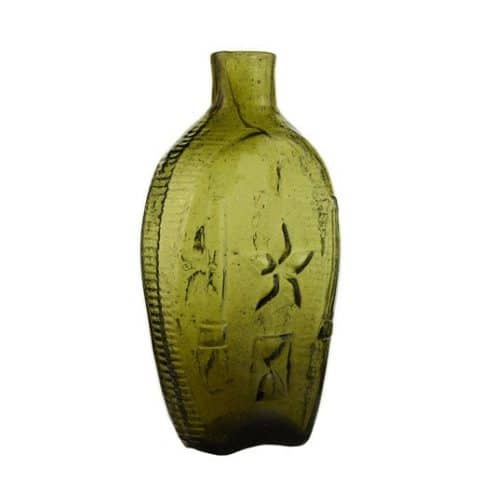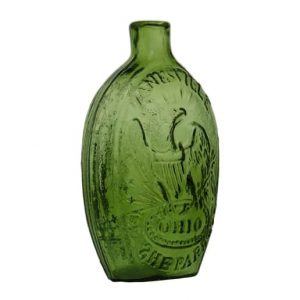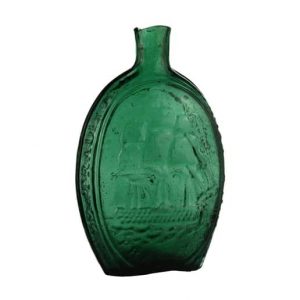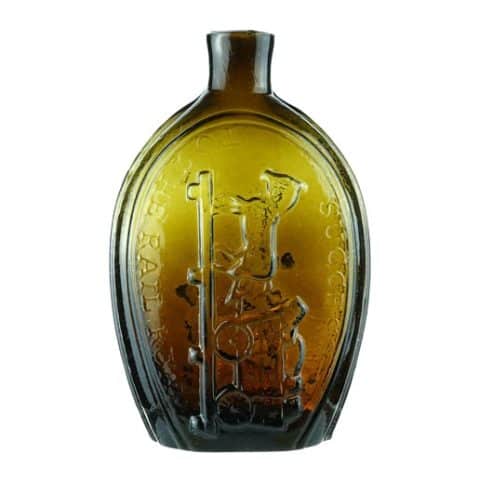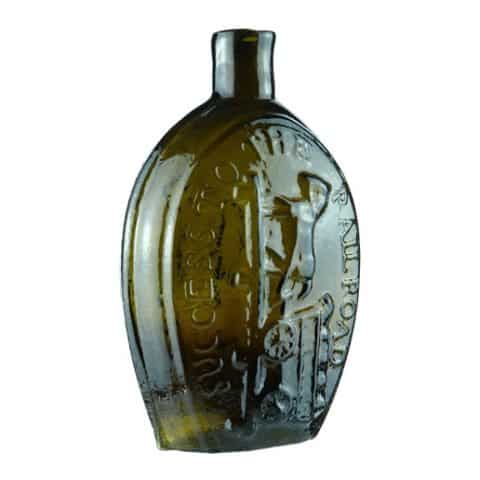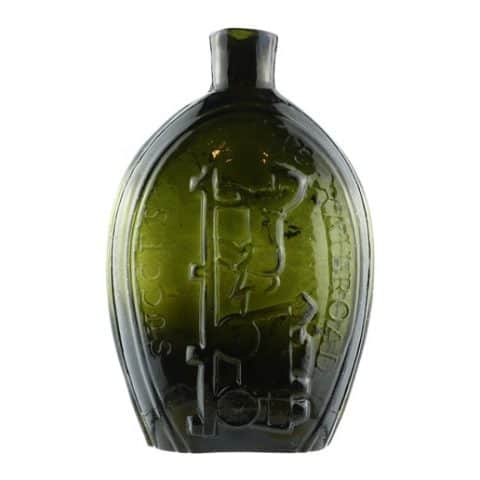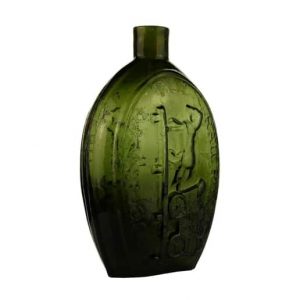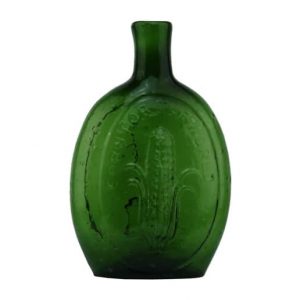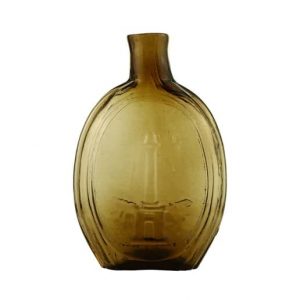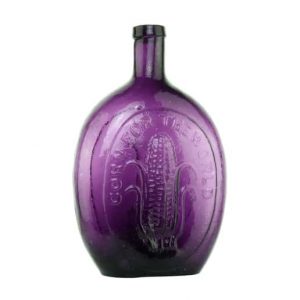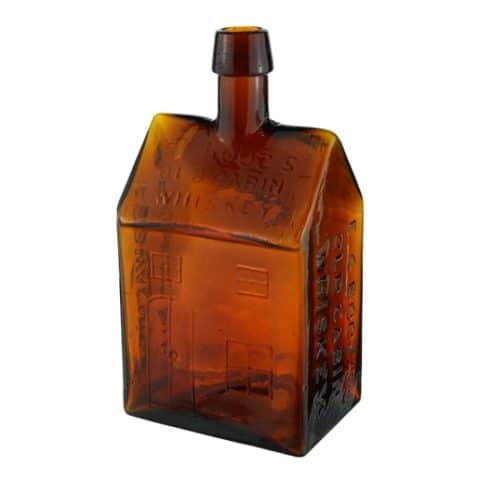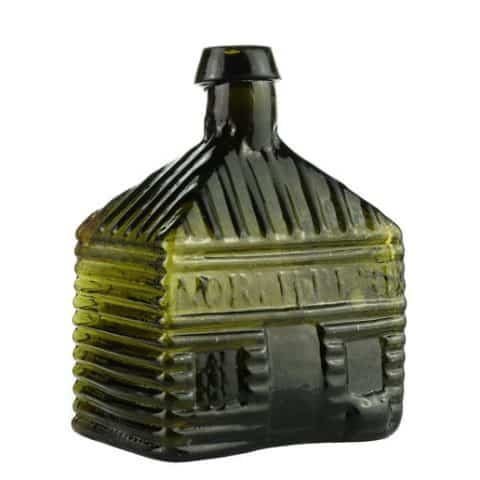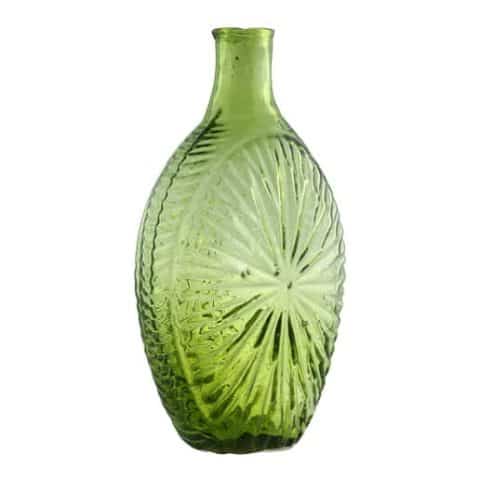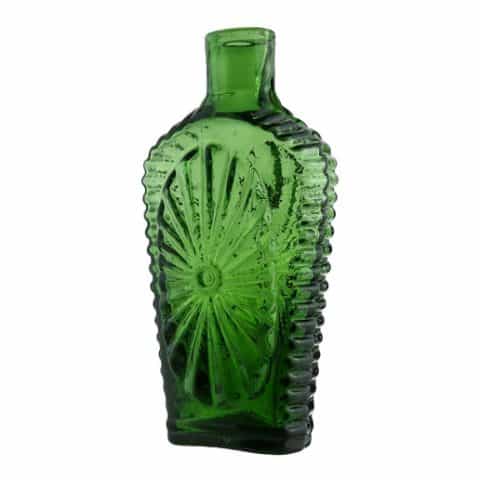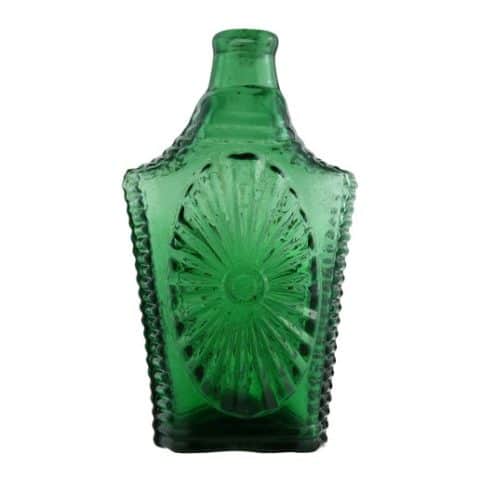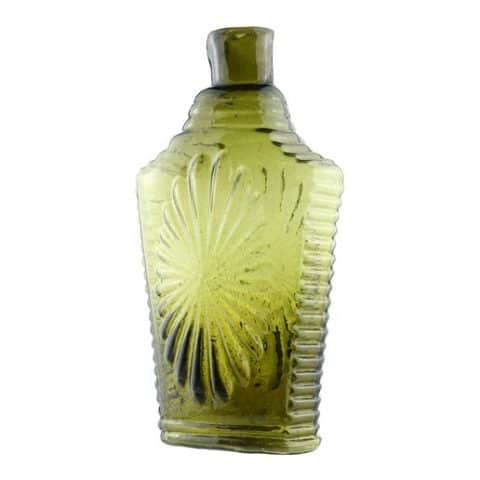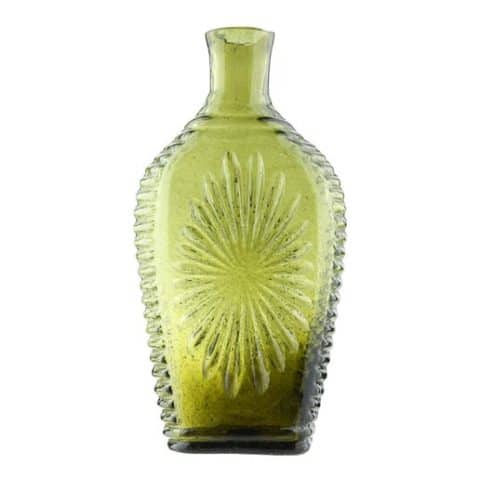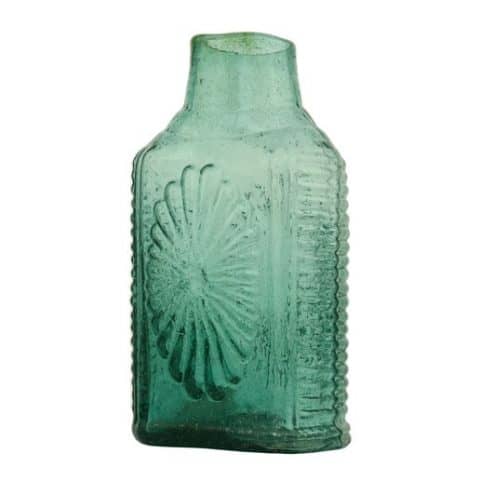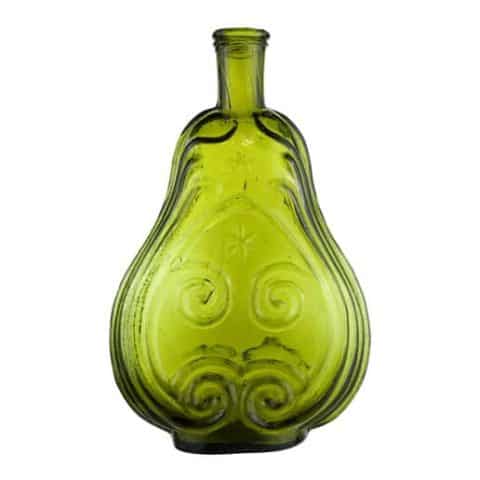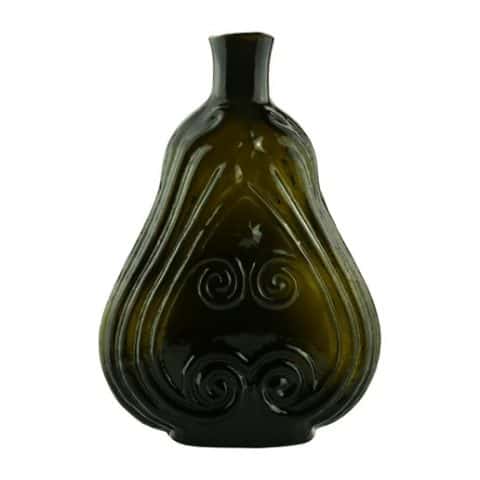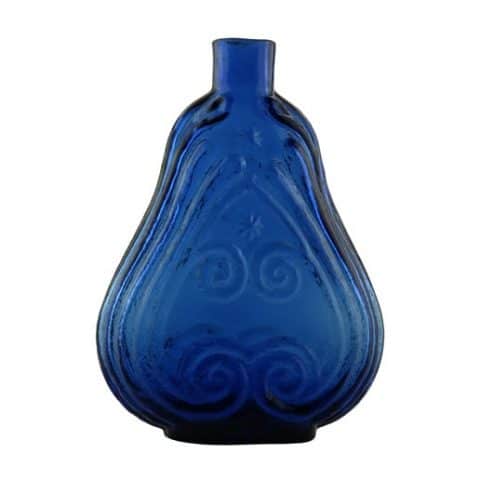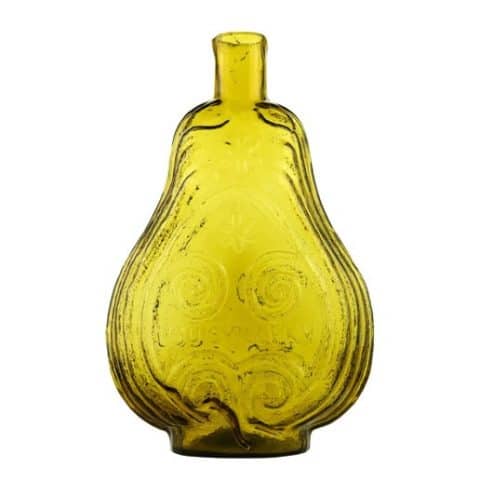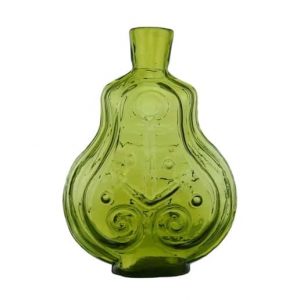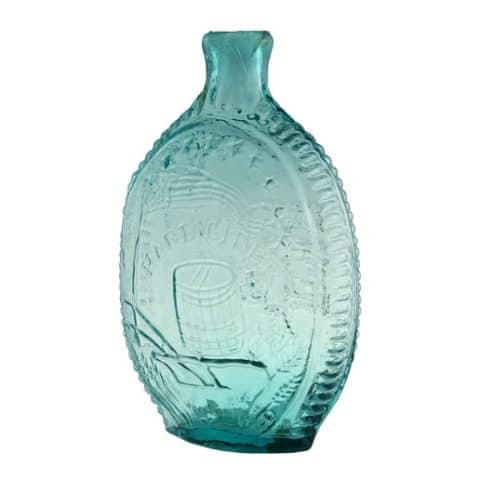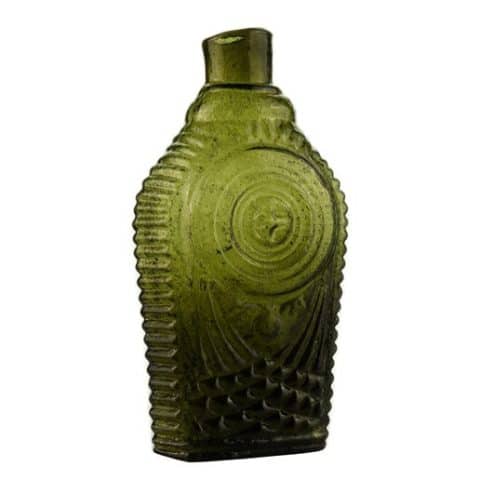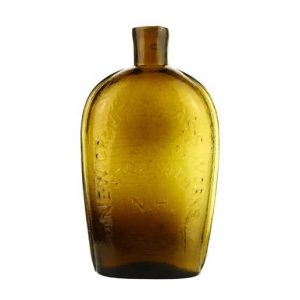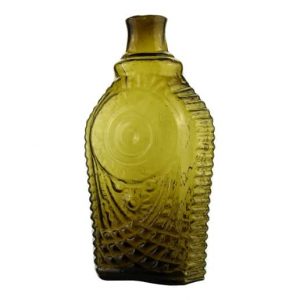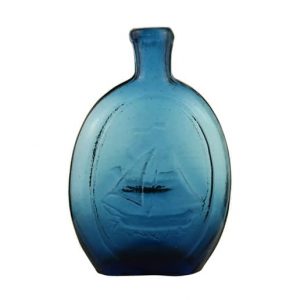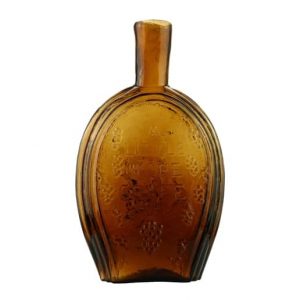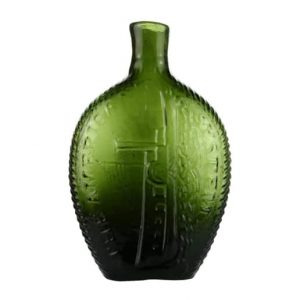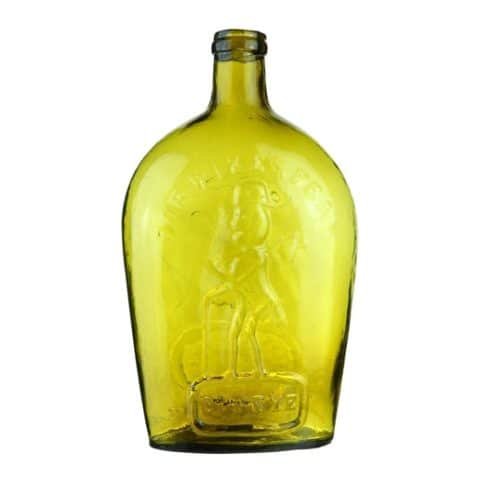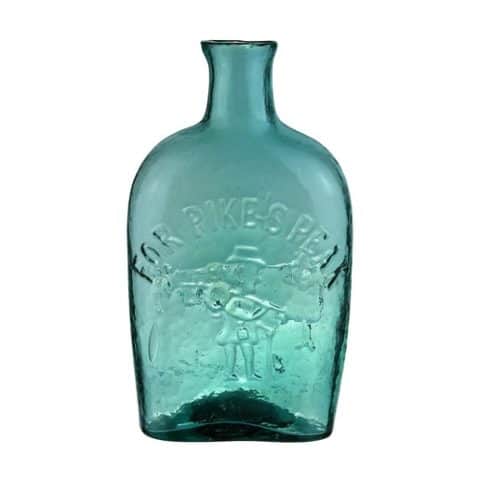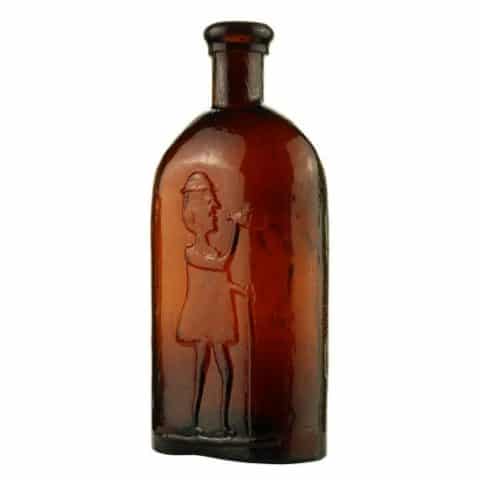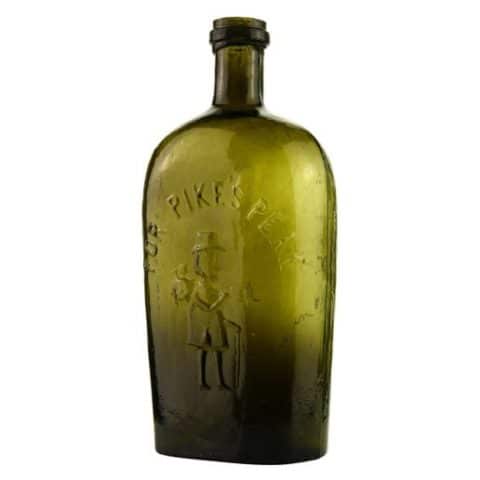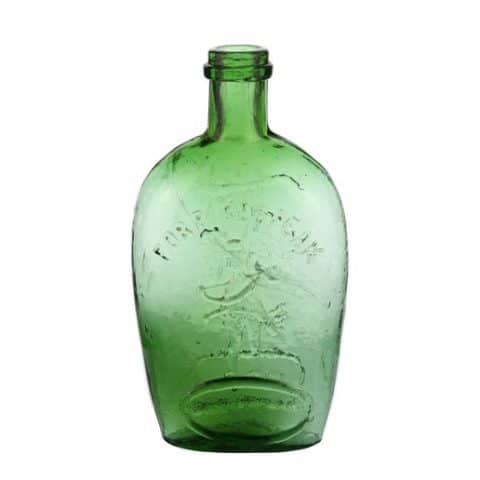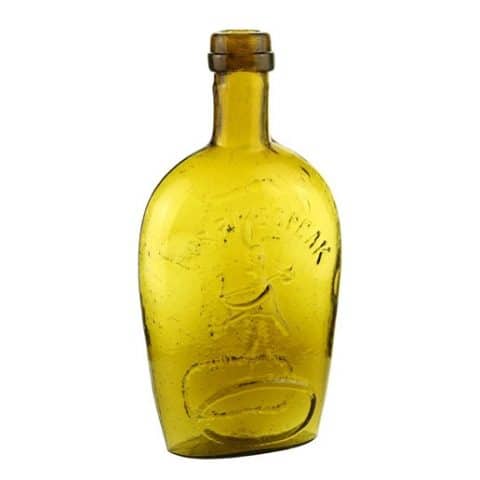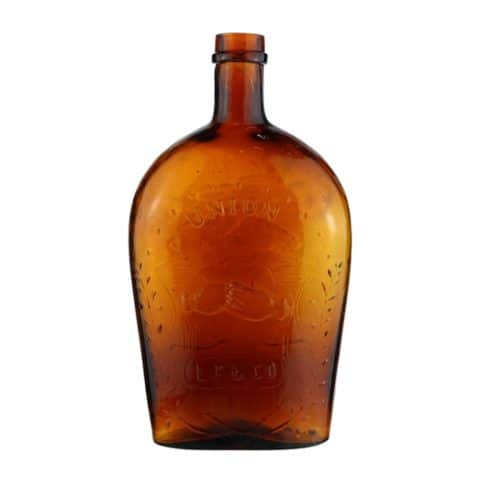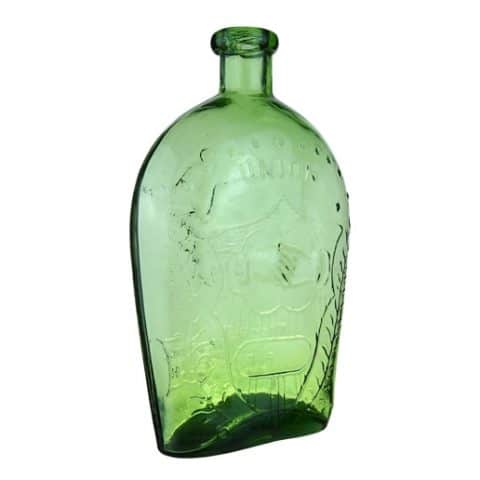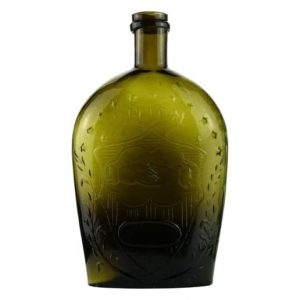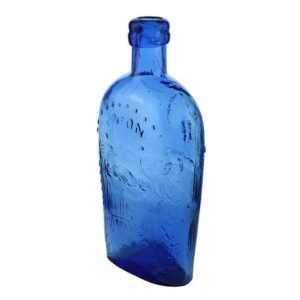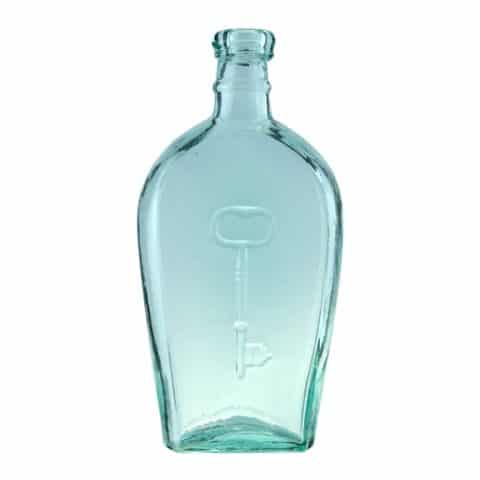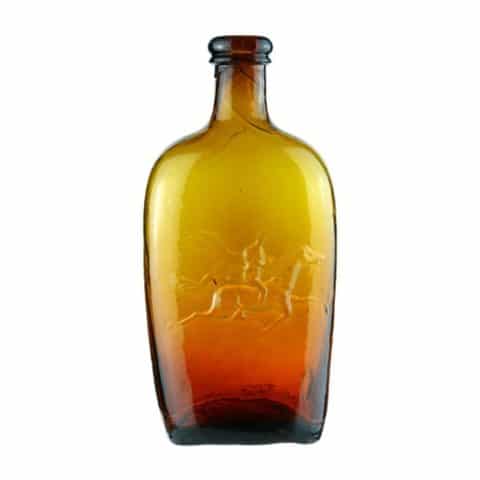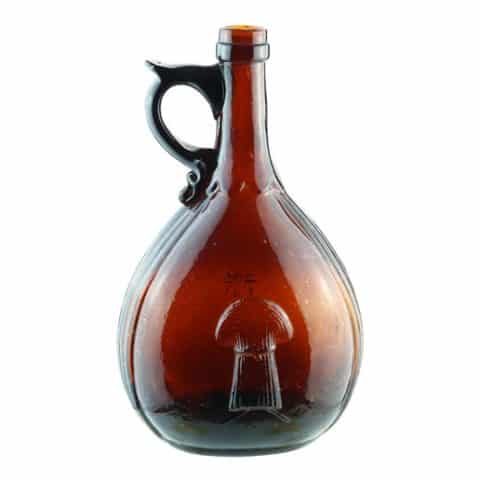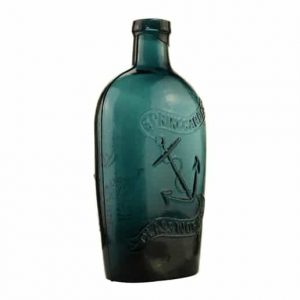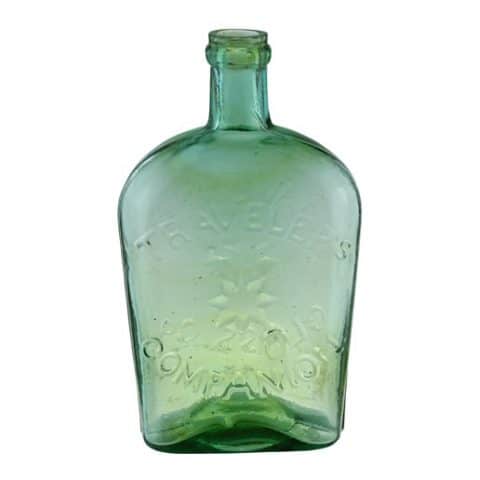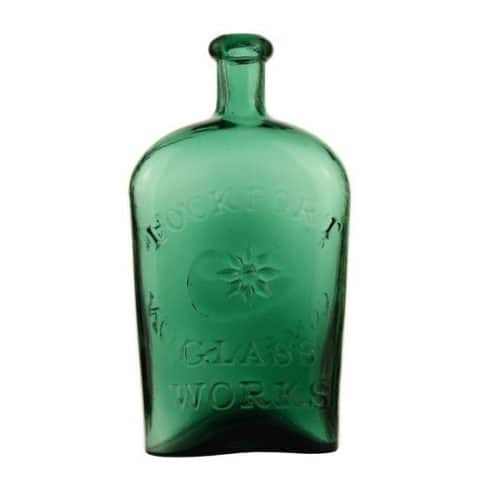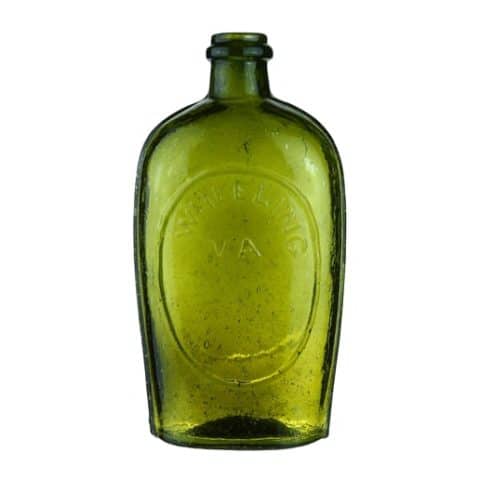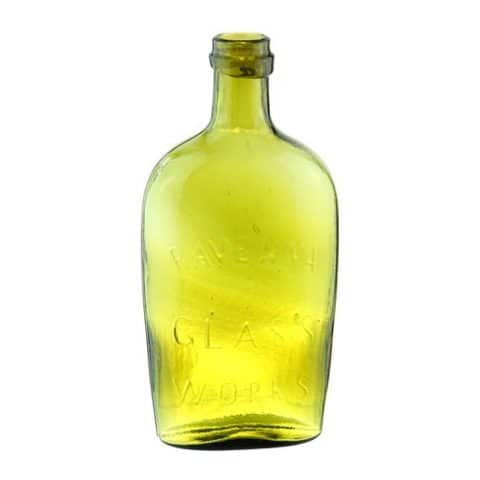GVII-1 “North Bend” – “Tippecanoe” Historical Cabin
GVII – 1
“North Bend” – “Tippecanoe” Cabin
Mount Vernon Glass Works
Vernon, New York
Dark Olive Pint+
Provenance: Anonymous
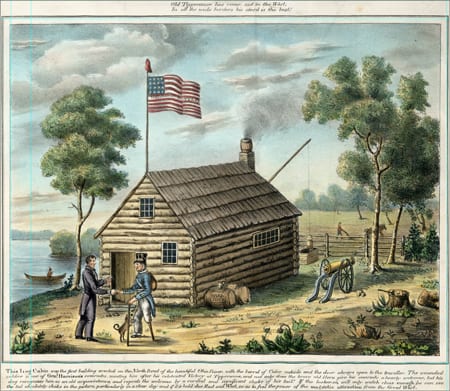
The GVII-1 “Northbend” – “Tippecanoe” figural cabin bottle represents everything that is great about our hobby. Besides being a great form and color, the bottle is historically significant and is extremely rare. We are pleased to have this example in our museum.
The colored print above is titled “Old Tippecanoe has come out in the West, In all the wide borders his steed is the best!” The accompanying text reads, “This Log Cabin was the first building erected on the North Bend of the beautiful Ohio River, with a barrel of Cider outside and the door always open to the traveller (sic). The wounded soldier is one of Gen’l Harrison’s comrades, meeting him after his celebrated Victory at Tippecanoe, and not only does the brave old Hero give his comrade a hearty welcome, but his dog recognizes him as an old acquaintance, and repeats the welcome by a cordial and significant shake of his tall! If the looker-on will only watch close enough, he can see the tail absolutely shake in the picture, particularly in a clear day and if it is held due East and West, so as to feel the power of the magnetic attraction from the Great West.“
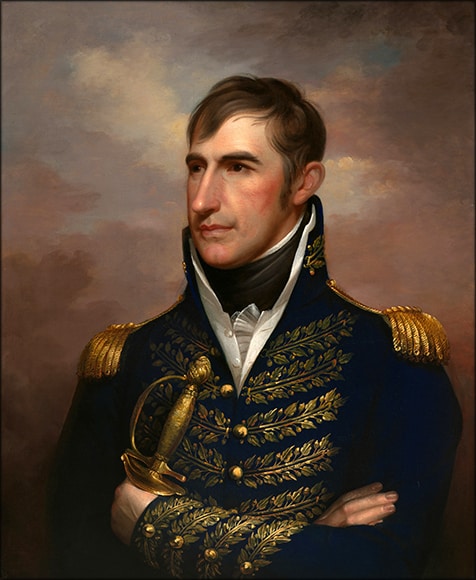
“Tippecanoe” is a nickname for William Henry Harrison from his role in the Battle of Tippecanoe. Harrison was also the ninth president of the United States from March 1841 to April 1841. Harrison was born in Charles City County, Virginia, the son of Founding Father Benjamin Harrison V and the paternal grandfather of Benjamin Harrison, the 23rd president of the United States. He was the last president born as a British subject in the Thirteen Colonies before the start of the Revolutionary War in 1775.

During his early military career, Harrison participated in the 1794 Battle of Fallen Timbers, an American military victory that effectively ended the Northwest Indian War. Later, he led a military force against Tecumseh’s Confederacy at the Battle of Tippecanoe in 1811, where he earned the nickname “Old Tippecanoe.” He was promoted to major general in the Army in the War of 1812, and in 1813 led American infantry and cavalry at the Battle of the Thames in Upper Canada.
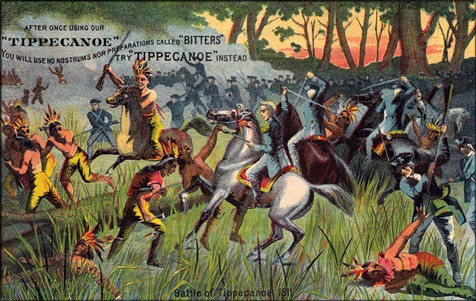
William Henry Harrison was one of three opposition candidates for president in 1836, coming in a respectable second behind Martin Van Buren. By 1840, with the nation in the grips of depression, Van Buren was vulnerable, and the opposition, now organized as the Whig Party, rallied behind Old Tippecanoe.
“Give him a barrel of hard cider and a pension…and take my word for it, he will sit the remainder of his days in his log cabin.” This was how one Democrat reacted to the news that William Henry Harrison would be the Whig candidate for president in 1840. It probably cost Martin Van Buren the election.
The campaign that followed was unprecedented, utilizing every available form of propaganda to mobilize voters. The Whigs turned the Democrats’ characterization of Harrison as an ignorant rustic to their advantage, transforming their candidate into a romantic figure, the soldier-statesman in homespun, a spokesman for the common man.
The log cabin and cider barrel came to symbolize Harrison’s candidacy. The imagery was exploited to its full potential, appearing on everything from clothing buttons to dinnerware. Harrison toured the country and spoke before crowds of thousands, the first candidate to stump on his own behalf.
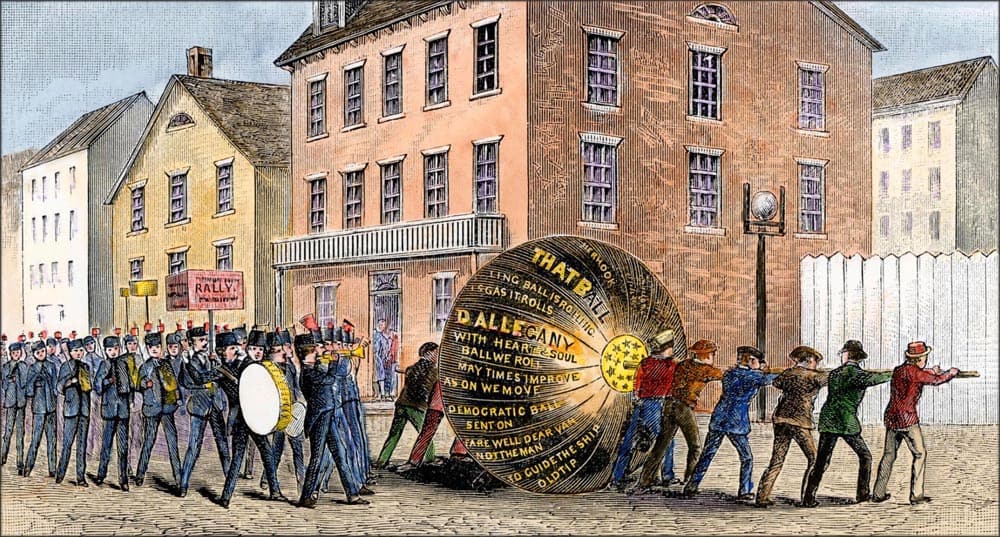
Bottles of whiskey in the shape of log cabins were dispensed, and by the end of the campaign, there were parades miles long of voters singing, drinking, and chanting, “Tippecanoe and Tyler Too!” John Tyler of Virginia was Harrison’s running mate. The strategy worked, Harrison won the election, and the Whigs took both houses of Congress.

On what is considered the front of the GVII-1 Northbend Tippecanoe bottle, the cabin has large embossed serifed letters reading, ‘NORTHBEND’ horizontally above the door. At the center is a door with glass windows and divided panes on either side. A string latch rope hangs from the left side of the door as you face the flask. A cider barrel is under the right window. On each side of the roof are eight graduated vertical ribs representing the roofing. The bottle or cabin sides have eleven heavy ribs representing logs. The reverse of the bottle is the same as the obverse except for the embossing above the door reads, ‘TIPPECANOE.’ The pint plus flask has a pontil and a broad sloping collar mouth connected to a neck that connects with the juncture of the four roof sides. Known colors are dark olive amber, deep olive green, and deep emerald green. Of the few examples known, most have some damage with the corner holes being the predominant damage seen. The bottle was produced at the Mt. Vernon Glass Works in Vernon, New York.
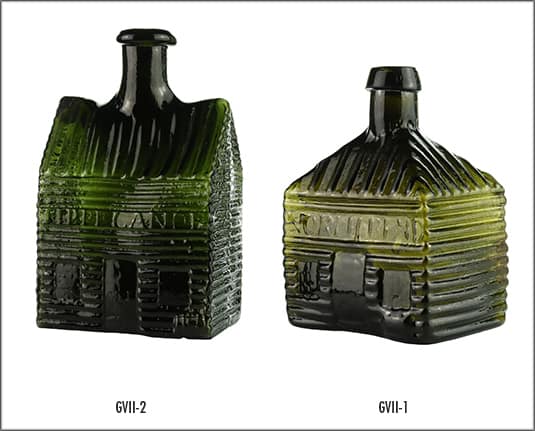
To accompany our museum example of the four-roofed GVII-1 Northbend – Tippecanoe figural cabin, we are extremely pleased to have on display the older two-roofed brother. The GVII-2 Tippecanoe is almost square in length and breadth and has a two-roofed or gable roof. This figural cabin bottle is taller than the GVII-1 and even tougher to find as there are only two known examples. It was probably produced after the GVII-2 because of the inscription “NORTHBEND,” which was introduced later in the Harrison campaign.
Support: Primary Image: GVII-1 “Northbend”-“Tippecanoe” cabin bottle imaged on location by the FOHBC Virtual Museum Midwest studio led by Alan DeMaison.
Support: Reference to Tippecanoe and E. G. Booz Too! by Thomas C. Haunton, Fourth Edition, Jerseyana Antiques and Collectibles, 2017
Support: Reference to American Bottles and Flasks and Their Ancestry by Helen McKearin and Kenneth M. Wilson, Crown Publishers Inc., New York, 1978.
Support: Reference to Mt. Vernon Glassworks Project.
Support images: Log Cabin Bottle. Olive green glass; mold-blown; broad sloping collar, pontil mark. Obverse: in form of log cabin with hipped roof; door at centre with latch string at left and window either side; cider barrel beneath window at right; above door extending across bottle rectangular frame containing the word “TIPPECANOE”. Reverse: similar to obverse except inscription “NORTH BEND”. Ends and roof: on each side of roof eight graduated vertical ribs and eight on the ends of roof; on each end of flask eleven heavy horizontal ribs representing the logs. – Corning Museum of Glass, Provenance McKearin Antiques, 1960
Support images: Auction Lot 44: “North Bend” – “Tippecanoe” Historical Cabin Bottle, probably Mount Vernon Glass Works, Vernon, New York, circa 1840. Log cabin form, deep emerald green, applied sloping collared mouth with ring – tubular pontil scar, ht. 5 inches; (3/16 inch hole in the lower-left base corner of the “Tippecanoe” side). GVII-1 Extremely rare, handsome, and a beautiful color. Of the few examples known, most have some damage with the corner hole being the predominant damage noted. Often associated with a mold flaw. Ex Edmund and Jayne Blaske collection, Warren “Bud” Lane collection. – Norman C. Heckler & Company, Auction #100, October 2012
Support images: Auction Lot 51: “North Bend” – “Tippecanoe” Historical Cabin Bottle, probably Mount Vernon Glass Works, Vernon, New York, circa 1840. Log cabin form, deep emerald green, applied round collared mouth – pontil scar, ht. 5 5/8 inches; (1/4 inch hole in the upper right corner of “Tippecanoe” side with cracks in the lower roof and right side, 7/8 inch fissure in mouth and neck). GVII-1. Of the few examples known, most have some damage with the corner hole being the predominant damage noted. Long “stovepipe” neck may be unique for the cabin. Extremely rare and historically important. Property of The Strong, sold to benefit the museum’s collections fund. – Norman C. Heckler & Company.
Support: Illustration: Old Tippecanoe has come out in the West, In all the wide border his steed is the best! – Ohio History Connection
Join the FOHBC: The Virtual Museum is a project of the Federation of Historical Bottle Collectors (FOHBC). To become a member.

